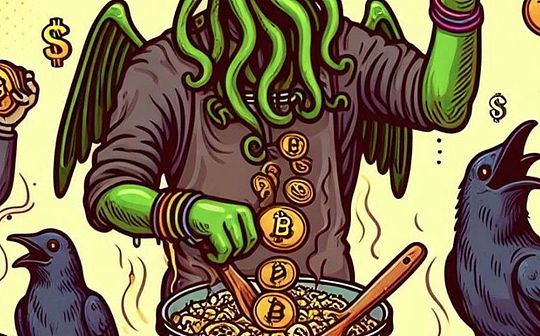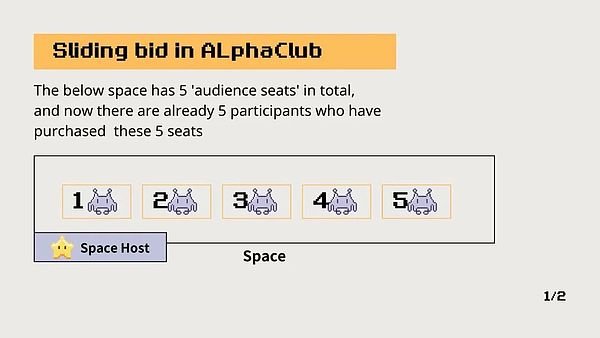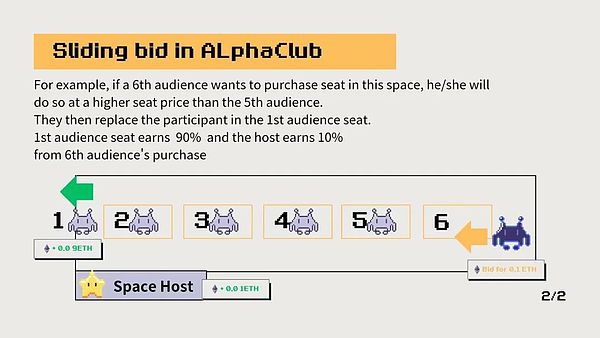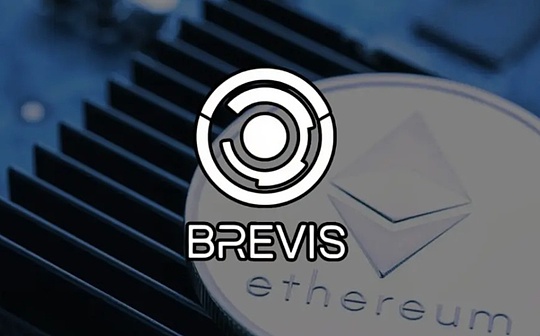
Author: Mike@Foresight Ventures
1. Dining rules
You may find that assets drive the wild growth of Web3, which is filled with various asset standards for users to trade. It can even be said that most Web3 applications are based on them at present.
The most common one is the token standard.
For example, ERC-20, you can use ERC-20 to issue various coins. These coins can have various narratives and functions, such as equityization, bonding, playing Defi, DAO governance, etc..You can also follow the AMM curve to trade these tokens to complete speculation.
Or ERC-721, you can use this standard to issue NFTs. What carries the value of NFTs is what everyone calls consensus, speculation, and untapped utility.
For example, friend.tech, each user is a key-based Ponzi plate, following bonding curve to trade.Including the recently popular ordinals ecosystem, BRC-20 and various inscriptions, as well as the release of various gold-driving game Web3 game engines… On the surface, it provides new functions, but in essence it is still a new asset standard with different carriers..
Just like a person designs a casino game, the rules are set by him. He can open a casino by himself, and others can also open his own casino by accepting his rules. He can provide this rule to others for free as a public property.Casinos, such as ERC-20 and ERC-721 standards.You can also pump water, such as Opensea to extract NFT transaction fees for various series, or Uniswap to charge agreement fees for transactions and liquidity pools.
We don’t trust people, we trust code
The advantage of Web3 over Web2 is that once the model is conceived, the permissionlessness of blockchain can allow the model to be quickly deployed into the market in the form of smart contracts, and the effectiveness of the model is verified by market feedback.At the same time, the transparent performance of smart contracts allows participants to identify risks by themselves.The issuance of assets is often simple pump and dump, but sometimes it is also a way to quickly get the product running, starting, expanding, bubble, and converging. This cycle time can be greatly shortened.Many project parties quickly completed cold starts with disk control and attractive modes, attracting a large number of users and liquidity, and using them to build infrastructure and networks.Filecoin and Polkadot are classic examples.
Degens are like crows, smart and greedy, attracted by assets, feed on assets, and fight for them.The Web3 world is like a banquet for the crows. The projects are like plates of dishes, composed of various ingredients. Smart and strong crows can enjoy the food, while slow crows will compete for food.Being defeated and starving may also be in danger by eating toxic dishes (such as rug pull).Project parties play the role of chefs, using asset standards to create projects to manipulate crows to achieve their goals.
2. Use narrative/utility as kitchen utensils
We humans are born to understand the world by facts and numbers, but by narrative
Narrative refers to stories and information conveyed through language, text, visual or other forms.It is a form of expression used to describe events, experiences, or concepts designed to convey a specific message, perspective, or value to the audience.BTC is a very attractive narrative: decentralized digital gold, alternative ways to pay and transfer, financial inclusion, and anti-system tools.BTC has the potential to change the modern financial system, and the breadth and depth of this narrative have huge impact.AI, BTC ecology, modularity, etc. are currently popular narratives in Web3. While we are looking for opportunities in these popular narratives, we are also seeking non-consensus narratives. Non-consensus alpha is often more numerous than consensus.
Narrative is the carrier of assets, like a pot, determining the upper limit of value. As long as the logic cannot be falsified, a sexy enough narrative can theoretically make the market’s cake very big.Just like going to a temple to buy incense, or finding a wizard to bring good luck to yourself, people will pay for some unproven vision.It is not only a way for a project to convey its own vision, value and goals, but also an important means to attract and maintain the interests of the community, investors and users.The following discusses the importance of narrative to building assets from several dimensions:
1. Influence participants’ emotions
Emotion-driven: During the funding session, participants’ emotions are an important factor.A fascinating narrative can inspire excitement, confidence, or fear, which can affect participants’ behavior.
Attraction of stories: Humans are born to like stories.A good narrative can make complex concepts easier to understand and appeal, which is especially important for attracting participants.
2. Promote understanding and communication
Simplify complexity: Web3 gameplay and strategies are often complicated and difficult to understand.An effective narrative can simplify complex information into easy-to-understand stories, helping participants quickly grasp key information.
Enhanced communication: A compelling story is easier to remember and spread.In the age of social media and the Internet, the speed and scope of stories can greatly affect the popularity and appeal of a capital plate.
3. Build trust and branding
Trust building: Through narrative, the capital plate can build a sense of trust.Historical data in the story, success stories or the vision of the leader can all increase the trust of participants.
Brand Identity: The story helps the funding plate establish a unique brand identity.This not only attracts participants, but also helps to stand out in a highly competitive market.
4. Affect market expectations
Market dynamics: The market is not only driven by data and facts, but also affected by expectations and forecasts.A strong narrative can shape market expectations, which in turn affects capital flows and prices.
Self-fulfilling prophecy: In some cases, strong narratives can even lead to self-fulfilling prophecy, that is, the market acts because of believing in a certain narrative, thus making the narrative a reality.
3. Take the market as firewood
Standing on the air vent, even pigs can fly
There is a flame that is large enough to quickly cook a delicious and mature dish. If the flame is too small, the dish may be raw, or the banquet has fallen off before the dish is cooked.
Narratives and markets require a matching of time and space.The key to choosing a market is to meet the needs of existing potential participants, how many people are willing to participate, what participants are, what amount of funds is, how the product meets their needs, and the behaviors they participate in can in turn make the project.What to bring.
Product-Market Fit is the key to project success, which not only determines whether the product can survive in the market, but also the basis for sustainable growth and development:
Demand confirmation: Product-Market Fit ensures that your products or services meet actual needs in the market.If the product does not match market demand, it may fail even if the product itself is of high quality.
User retention and reputation: When the product is closely connected with market demand, user satisfaction is higher and it is more likely to produce word-of-mouth effects.Satisfied users are the best marketing promoters.
More effective marketing: Having product market fit can make marketing campaigns more efficient because you will target consumers who are most likely to benefit from your products.
The foundations of growth and expansion: Product-Market Fit is the foundation of sustainable growth.Only when the product adapts to the market can the project party effectively expand and grow.
Resource Optimization: Understanding market demand can help companies better allocate resources and avoid wasting time and money on functions that do not meet market demand.
Competitive Advantage: In a highly competitive market, products that can accurately meet consumer needs are more likely to gain competitive advantages.
Risk reduction: Understanding and meeting market demand can reduce the risk of business failure.Product market fit means that the product is accepted by the market, which reduces the uncertainty of the market launching new products.
Attracting investment: For startups seeking funds, being able to prove that they have reached or are approaching product market fit will greatly increase the possibility of attracting investors.
In the Web3 field, an example of showing good product market fit (PMF) is the Uniswap we are familiar with:
Solve the need for decentralized transactions: Uniswap creates a decentralized trading platform that allows users to exchange cryptocurrencies directly between each other, without the need for traditional intermediaries such as banks or exchanges, and can issue assets without permission.
Simplify the trading process: Uniswap uses a model called automated market makers (AMMs) to simplify the trading process.Instead of matching transactions with specific buyers or sellers, users interact directly with smart contracts, which improves efficiency.
Provide liquidity incentives: Uniswap encourages users to lock their assets on the platform to provide liquidity and give rewards through transaction fee sharing.This mechanism attracts a large number of liquidity providers, providing liquidity to newly issued tokens (local dogs).
Trustless environment: Because it is based on blockchain, Uniswap allows users to trade without having to trust the other party or third-party intermediaries, reducing transaction risks.
Promoting the development of the DeFi ecosystem: The emergence of Uniswap has promoted the development of the entire decentralized financial ecosystem and provided a foundation for the development of other DeFi projects and services.
4. Use desire as food
Okay, there is a pot and a fire, it’s time to put our ingredients in it.
Seven Deadly Sins is a group of crimes considered particularly serious in the Christian tradition, which originated from early Christian thinking and teaching on human behavior.The concept of the Seven Deadly Sins was initially formed by early Christian thinkers, especially the 4th-century monk Evagrius of Pontus.He listed the eight main sins of human beings, known as the “Eight Evil Thoughts”.In the 6th century, Pope Gregory I modified and streamlined this list, reducing it to seven, forming the “Seven Deadly Sins” as modern-day.The seven deadly sins identified now include pride, envy, wrath, laziness, greed, gluttony, and lust.These crimes are considered the source of other sins.The seven deadly sins occupy an important position in Christian moral and spiritual teaching and are used to teach believers to identify and avoid these sins in order to promote the health and salvation of the soul.

avoid?No, we have to take advantage of people’s desires.The wealth code is clearly written in ancient files.The essence of business is to discover or create needs and meet needs. After desire, a good business will often lead to two results, or both results will exist at the same time: amplify or satisfy the user’s desires.
The direction of narrative and market may change as time goes by, and people have experienced countless cycles of civilization evolution and technological progress over thousands of years, but their desires are always the same.Smart people can often manipulate groups through the laws of human nature, meet the needs of groups, and incorporate them into part of their own system to achieve their goals.The following are some mechanisms (business model) and examples that can attract crows. No matter whether it is Web2 or Web3, they can play the role of food that stimulates crows’ appetite.However, under the permissionless conditions of Web3, their composability and deployment efficiency have been improved, opening up more possibilities.
4.1 Provide a trading market
The existence of transactions means speculative attributes, there is the possibility of buying low and selling high. Uncertainty and high return potential together constitute the vision of getting rich quickly, attracting people to pursue immediate and huge wealth growth.Liquidity and volatility are particularly important in trading. In casinos, every turn of chips means the dealer’s pump.The reason why tokens are said to have better fundamentals than NFTs is that tokens have better liquidity. Tokens can be divided into countless portions, and everyone can participate in them. It has nothing to do with the amount of funds and is more flexible in trading.Most NFTs are traded on a single basis. Even if an NFT can be divided into many parts through fragmentation, it only corresponds to one part of the value, and the transaction threshold is higher and the flexibility is lower.Volatility means the possibility of making high profits, providing people with a sense of stimulation and instant satisfaction.
Successful transactions bring people not only financial returns, but also psychological satisfaction of victory and achievement.Even if there is actually more luck, successful transactions are often seen as a manifestation of intelligence, analytical and predictive abilities.
Keywords: greed, arrogance
4.2 Endorsement
Obtaining endorsements from leading investment institutions or KOLs can also stimulate the desire for followers to participate. However, these investment institutions or KOLs can also use their authority and influence to cut their leeks. DYOR:
1. Trust and credibility
Brand Trust: Large organizations usually have a good reputation and brand awareness, which adds trust and credibility to their recommendations or endorsements.
Professional Recognition: Large institutions are regarded as experts and authority in the market, and their decisions are often considered well thought out and based on adequate information.
2. Reduce sense of security and risk
Reduce perceived risk: Followers often believe that if a project or asset is supported by a large organization, the risk of investing in that project or asset may be lower.
Following Professionals: Followers tend to imitate the behavior of investors they consider to be more knowledgeable and experienced.
3. Social proof and herd psychology
Social Identity: Investment decisions in large institutions are seen as a social proof that “if these professional and successful institutions are investing, then this must be a good opportunity.”
Group Dynamics: Humans are born with a tendency to follow the group’s choices, especially when facing complex decisions.
4. Market influence
Market Leadership: The investment behavior of large institutions often has a market leadership role and can influence the overall trend of a certain field or asset.
Demonstration effect: Decisions of these institutions may initiate a demonstration effect that attracts more investors to follow.
Keywords: laziness
4.3 Control disk
Controlling the disk refers to the act of manipulating the price and trading volume of assets through a series of means and strategies.On the news side, pulling the market, smashing the market, and conquering people with the rise are all talking about controlling the market.Here are a few key reasons why the control system attracts participants:
1. The temptation to make a quick profit
High return commitment: Control activities are usually accompanied by rapid rise in asset prices, creating the illusion of rapid and high returns for retail investors.
Greed: Humans are born to pursue wealth growth, especially when it seems to be easily obtained.
2. Fear of missing out (FOMO)
Follow-up psychology: When seeing others seem to make huge profits in a short period of time, retail investors are often afraid to miss similar opportunities.
Social proof: Others’ investment behavior is regarded as a “proof” that implies the correctness of investment decisions.
3. Market sentiment and group behavior
Market boom: During market boom or bubble, retail investors are easily attracted by general optimism.
Herd Psychology: People tend to imitate the behavior of most people around them, especially in the case of information asymmetry.
The most common example is the pump and dump we are familiar with
Pump (hype):
Creation phenomenon: Investors or groups artificially speculate on assets (usually low liquidity) through various means (news, statements, social media, community calls) to create the illusion that the asset is about to rise, or to allow early participation by pulling the marketThose who become rich will create a wealth effect and attract those who have not entered the market.
Raise price: This hype has attracted the attention and interest of other investors, leading them to purchase the asset.As demand increases, asset prices rise.
Dump (sell):
High selling: When the asset price reaches a relatively high level, investors or groups that initially engage in speculation sell their assets at a high price.
Price collapse: As the asset price begins to fall sharply with large numbers of selling, and later investors face losses, especially those who buy at high prices.
Whether it is to increase the amount of shipments to make money, to gain attention, or to quickly attract participants to provide liquidity or build infrastructure, controlling the disk is an effective way to achieve its own goals through user behavior.
Keywords: greed, arrogance
4.4 Motivation
Incentives are the most direct way to attract users: airdrops, invitation rebates, interest generation, mining rewards, and discounts after the transaction volume threshold are all low-risk and obvious returns. All of these incentives provide obvious value proposals.Users can directly see potential benefits from it. The incentives increase users’ participation in the platform or project, promote the growth of the platform or project and the expansion of the user base. As more users participate, the platform or project itself gains value., further attracting more users.In essence, it is a mismatch in futures and spots.
These incentives are often closely related to user participation, and there may also be some exit punishment mechanisms to establish user sunk costs and bind users to projects.
Tip: The motivation of strong immediacy and short, flat and low are very addictive, which is the nipple joy we are familiar with.
1. Airdrop
Low Risk: Users usually have the opportunity to obtain free tokens or assets without investing money or simply holding specific assets.
Direct Return: Airdrop provides direct financial incentives where users can instantly obtain valuable tokens.
2. Invite rebates
Network effect: By inviting new users, existing users can receive certain rebates or rewards. This model takes advantage of network effect and encourages users to promote products or services.
Win-win situation: Inviters and invitees often benefit from it, creating a win-win dynamic.
3. Rest
Passive income: By pledging or investing in specific assets, users can obtain passive income, such as interest or other forms of return.
Relatively low risk: Earning income from interest-bearing is often considered a less risky strategy compared to direct trading markets.
4. Discount after the transaction volume threshold
Encourage active trading: Provide discounts when the user’s trading volume reaches a certain threshold to incentivize users to trade more frequently.
Increase user stickiness: Discounts attract users to continue trading on the same platform, enhancing the platform’s user loyalty.
5. Mining Rewards
Accelerate construction: Whether it is liquidity mining or node mining, token incentives will attract people to participate and accelerate the construction of liquidity and node networks.
Value binding: Mining activities often have pledge and slashing mechanisms, which bind the interests of nodes to the value of the network. The exit or evil of nodes will cause economic losses to the nodes to maintain the safe operation and stability of the network.Both 51% attacks of coin and Optimistic fraud proof are good examples: if a node wants to do evil, its cost is often much greater than its benefit.
The recent Blast airdrop directly attracted a large amount of liquidity, and it obtained more than 800 million in just a few weeks. The logic is very simple and crude, which is to smash the money into the face of the participants and invite points to carry them.The network effect generated by the Ponzi flywheel.Although cross-chain with L1 will increase risk exposure, participants care whether this model can make them profit. These security issues have been narrowed in the face of a large amount of money, and people who come to participate are still in a steady stream.
Keywords: binge eating
4.5 Leverage
Leverage can leverage gambling, which significantly increases the risk and potential returns of investment, thereby exacerbating psychological and behavioral patterns similar to gambling:
1. Increased potential returns
Amplify returns: Leverage allows investors to control larger investments with less funds, so potential profits are also amplified accordingly.
Attraction: This amplification effect attracts investors seeking fast and high returns, similar to the pursuit of big winners in gambling.
2. Increased risk
Amplify the loss: Leverage not only amplifies the profits, but also amplifies the loss.A small unfavorable movement of the market may lead to significant capital losses.
Stress and Impulsive Decision: In the face of higher risks, investors may experience more stress and make impulsive, irrational decisions.
3. Psychological impact
Overconfidence: Using leverage may lead to overconfidence in investors who mistakenly believe that they can control market risks.
Chasing Loss: After the loss, investors may increase leverage in an attempt to make a quick return.
4. Invisible “bet”
Invisibility of funds: Unlike physical casinos, in crypto markets, the use of funds is digital and invisible, which may make investors insufficient awareness of the actual funds and risks invested.
5. Accessibility and convenience
Easily Use: Many products of Web3 make using leverage very easy, similar to the universal accessibility of gambling.
The perpetual contracts have a hundred times leverage, the Rollbit’s 100 times leverage, and Rari capital’s Defi lending and loans have all attracted a large number of users through the stimulation of high leverage, becoming indispensable charm points for these projects.
Keywords: Greed
4.6 Lottery
The mechanism of the lottery is also a gambling amplifier, which inspires and exploits people’s strong reactions to random rewards, like going to a temple to buy incense or people pay for their wishes.:
1. Uncertainty and motivation
Incentive effect: The incentive effect brought by uncertainty is very powerful.The randomness and potential jackpots in the draw inspired people’s excitement and expectation.
Dopamine release: When participating in a raffle draw and expecting a possible victory, the human brain releases dopamine, a neurotransmitter associated with pleasure and reward.
2. Imbalance between risks and rewards
The temptation of high returns: Even if the chance of winning is low, huge potential returns can attract people to participate, ignoring actual risks.
Cost Underestimation: Participants tend to underestimate the actual cost of small investments in long-term accumulation.
3. Chase Loss
Chase the Grand Prize: Participants may continue to invest in hopes of winning the Grand Prize in the end, which is similar to the “chase the Loss” psychology in gambling.
Sunken Cost Fallacy: Long-term participants may continue to participate because of the time and money they have invested, hoping to make a profit or make a profit.
4. Hallucination control
Misconductive sense of control: Participants may mistakenly believe that they can increase their chances of winning through certain strategies or intuitions.
Pattern recognition tendency: People tend to look for patterns or patterns in random events, even if these patterns do not exist.
Pooltogether is a well-known lottery program in Web3, which allows users to deposit funds into a common prize pool to earn interest.These interest is then used as bonuses and is distributed to randomly selected participants through regular draws.All users’ principals remain safe and they will not lose their deposits even if they do not win the prize.This mechanism combines the security of savings and the stimulation of the lottery, providing a risk-free opportunity to win additional benefits
Keywords: Greed
4.7 Flywheel (3, 3)
The logic of Ponzi we are familiar with is very simple, which is the investment of latecomers to fill the benefits of early participants, and at the same time it has a network multiplication effect.
Projects like Olympus DAO and Anchor Protocol are able to attract a large number of participants, although they have been criticized by some as Ponzi-like models because they combine innovative financial mechanisms, high-yield commitments, and decentralized finance (DeFi)general interest in the field.Here are a few of the main reasons why these projects are attractive:
1. High-yield Commitment
Attraction: These projects often promise higher returns than traditional financial markets, which is very attractive to investors seeking high returns.
Earnings Farm: Participants can receive seemingly considerable interest or token rewards through pledge, borrowing or otherwise.
2. Innovative financial mechanisms
Unique Models: These projects are often based on unique and complex financial models, such as algorithmic stablecoins, liquidity mining, bonds, etc. These novel concepts attract people interested in financial innovation.
Technology Charm: Interest in blockchain and decentralized financial technology is also an important factor in attracting participants.
Keywords: Greed
4.8 Agent
The crypto world is like a gold mine, with countless gold and others digging, but the complex mechanisms and operations make the mining process difficult.
Human nature is lazy, which gives birth to a shovel.There are all kinds of shovels on the market, including wooden shovels, iron shovels, stainless steel shovels, and excavators.Efficiency, cost and application scenarios vary. What users want is nothing more than using the minimum cost: maximizing returns with a certain risk, or minimizing risks within certain profit expectations.Each next shovel is a bet, and the shovel itself can make a profit by taking the commission or sharing of the bet.There are two proxy methods. One is to provide various betting strategies for users to choose according to their own preferences, such as order transactions, liquidity mining pool aggregators, and the other is to directly help users directly host resources.
For example, the recently popular Clore.ai, Clore has a very convenient mechanism for miners, which is to help miners find the miners with the highest yield rate to mine in the network, and complete the network allocation when there is specific computing power service needs.Task; If there is no need for computing power services, the network will find the cryptocurrency with the highest mining yield at that time and participate in mining.In this way, GPU miners can throw the miner directly into the network to automatically maximize profits.
Various trading robots, ERC-4337, intention-centric applications, AI agents are all such shovels. They help users save complicated steps and achieve their goals quickly, easily and efficiently, which is to enhance user experience (UX) key points.
I will give you a mine, compare and give you a shovel after giving you a mine, and help you build a sales channel and create a fully automatic assembly line. Which one do you choose?
Keywords: laziness
4.9 Arbitrage
Although arbitrage may sound like a game for speculators, the existence of arbitrage mechanism is sometimes a way to ensure the health of the system. Arbitrage for the same assets in different trading markets can make the asset price between each market.As it becomes stable, the cost of user purchases will be closer to the actual market price, which reduces user risks.Or if the project wants to anchor a certain asset, setting up spread arbitrage is a good way to take the calculation of perpetual contracts and Luna/UST as an example:
Perpetual contract
When the price of a perpetual contract is higher than the spot price (i.e. when the contract is overvalued), the long pays the capital fee to the shorts; conversely, the shorts pay to the longs.The funding rate is usually adjusted every certain time (such as every 8 hours).The adjustment of capital rates reflects the market’s expectations and sentiment about the future price of the asset.Through this payment mechanism, traders are encouraged to trade in a direction that brings the price of a perpetual contract closer to the spot market price, helping the market to adjust itself so that the price of a perpetual contract will not deviate from the spot price for a long time.
Luna/UST
Basic concepts
UST: TerraUSD (UST) is an algorithmic stablecoin designed to maintain a 1:1 value with the US dollar.
Luna: Luna is a native token of the Terra ecosystem used to govern and maintain stablecoin systems.
Anchor mechanism
Algorithmic adjustment: When the market value of UST deviates from the 1:1 ratio of USD, the system restores the balance through an algorithmic adjustment mechanism.
Two-way conversion: Users can freely convert UST to Luna at a fixed $1 value.
Stable price operation
When UST > $1:
Mechanism: Users are incentivized to mint UST with a $1 value of Luna, because UST is worth more than USD in the market.
Results: This increases UST’s supply, thus reducing its market price.
When UST < $1:
Mechanism: Users can buy UST for less than $1 and convert it into Luna at $1 value.
Results: This reduces UST’s circulation, thereby increasing its market price.
While arbitrageurs are obtaining profits, they have become a tool for the project party without realizing it. While maximizing risk-free returns, they compete with the market, but in turn maintain the stability of the market. MEV is another interesting thing in the crypto world.example.
Keywords: Greed
4.10 Competition and Game
Let users play games by themselves, rush to rush, and let the capital market naturally expand.
Commonly known as the intra-roll, the establishment of victory, defeat, rank and ranking makes people compete with each other in the same scene. The upper class wants to keep their position, and the lower class wants to kick off the upper class and climb up, and invisibly achieve the establishment of rules.the purpose of the person.
There are many examples in Web2. There are many games with ladder rankings or rankings. Often, many players will crazily increase their strength in order to rank first in the ladder or keep playing games for the sake of improving their ranks.The money from krypton has flowed into the pockets of the game company without realizing it. When players are digging day and night, they have unconsciously contributed their loyal activity and game time to the game.
Douyin has a pk reward function. Two bloggers pk within a limited time to see who gets more rewards within this time. Bloggers hope that their rewards will surpass the other party, so they will do their best.The efforts of your fans will reward you, and fans will also hope that your favorite blogger will win. Generally, reward activities will be very frequent before the deadline. Without the promotion of Douyin itself, the reward volume will be blogged.The owner and the fans carried it up themselves, and a large part of the reward became the profit of Douyin.
There is a project called Alpha Club that also uses a similar logic:
A successful KOL wanted to share the wealth code, so she decided to start a space.Information is valuable and space is limited, so space has a price.How to decide on the price?Use bonding curve and increment in sequence.

Space location is limited, what should I do after the number of people is full?Using Sliding Bids, the latecomers paid a high price to the first person in the current seat according to bonding curve, and so on.

The first one makes profits automatically, while the later ones continue to increase in value.Everyone has become the market liquidity itself.
Users have two motivations to participate in auctions: one is the need for alpha information and knowledge, and the other is the need for speculation.Serious crypto investors, along with degen, who pursues speculation, have become participants in market pricing under such pricing models.Alpha Club’s Slogan: You either earn or learn is a true portrayal of the first principles of the market.
Keywords: Jealousy
5. Summary
Under desire, various ways of playing can be invented. These patterns can be combined and extended to different narratives and market scenarios, and countless capital trading patterns can be born.When a sufficiently profound narrative, a market that matches it, and an attractive model achieve a complementary state, a delicious dish is born, and it does not necessarily require strict supply and demand matching and application scenarios, so the Crow Flock will notPlease come by yourself.
Human nature drives prices, and prices return to value – the game between consumers and speculators, together constitutes the essence of the economic world.In the product mechanism, we may be able to see the truths of game, price and market.
In Web3, where chaos and order coexist, you and I are both chefs and crows.








